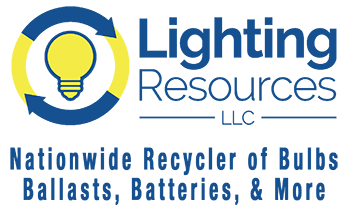Most of the light bulbs we use to light our homes and businesses are made of materials that are recyclable, but because some also contain small portions of hazardous material, people are understandably confused about what to do with burnt-out bulbs.
There are four primary types of bulbs in use today: incandescent, compact fluorescent lamps (CFL) and tubular fluorescent; high intensity discharge (HID) gymnasium style bulbs, and light emitting diode (LED).
Of these varieties, CFL, fluorescent tubes, and HID pose the most harm to the environment because of the small amount of mercury, about 4 to 20 mg, in each bulb. When CFLs and other fluorescent and HID bulbs are thrown into a dumpster, trash can, or compactor, they usually break. This can allow mercury to leach out of a landfill or incinerator and into the nearby earth and waterways, which is how fish become contaminated, and in turn, how humans can ingest mercury.
Because of the risks around mercury, the federal Environmental Protection Agency (EPA) regulates how businesses dispose of mercury containing bulbs. Some states have made it illegal for consumers and all businesses to discard fluorescent bulbs and other mercury containing bulbs into regular trash. At the same time, many curbside recyclers advise consumers to not put CFLs and fluorescent tubes into recycling bins.
So what do you do with burnt-out or no longer needed mercury-containing bulbs? CFL, HID, and fluorescent bulbs are recyclable, and it takes just a little extra effort to spare the environment from mercury contamination and make those material resources available for reuse.
While not as strictly regulated, LED bulbs also may contain contaminants such as lead and copper and should also be properly recycled.
How to identify CFL, HID, and tubular fluorescent bulbs
CFL bulbs come in a variety of sizes and shapes. The most common CFL bulb is wrapped into a shape that resembles the top of an ice cream cone so it the tubes can better fit into tight spaces like a lamp.
Fluorescent tubes are frequently used for overhead lighting in businesses and schools. They’re the long, tubular bulbs that have two metal pins on each end, and the lengths and diameters can vary.
HID lamps are generally larger bulbs with clear glass similar to a gymnasium bulb.
To help you know whether you have mercury-containing fluorescent bulbs, here is a list of some of the most common bulbs:
- Linear, U-tube and Circline Fluorescent Tubes
- Compact Fluorescent Lamps (CFL)
- High Intensity Discharge (HID) including:
- Mercury Vapor
- Metal Halide
- Ceramic Metal Halide
- Sodium vapor
- Xenon Short Arc
- Mercury Short Arc
- Bug Zappers
- Tanning Bulbs
- Black Lights
- Germicidal Bulbs
- Fluorescent Induction Bulbs
- Cold-cathode Fluorescent Bulbs
- Induction
- Plasma
- Neon Bulbs
How to recycle your bulbs
Mail-back recycling provides individual consumers and businesses with an easy way to recycle a multitude of household wastes that require special handling and processing. EZ on the Earth division of Lighting Resources offers a variety of lamp recycling kits that are delivered to your home or business, complete with instructions. When the kit is returned, you can obtain a certificate of recycling, which is important for businesses, because they are legally responsible for recycling hazardous materials.
The cost of each kit includes shipping charges to the recycling center. You fill up a kit with old bulbs, seal it, and call the designated parcel carrier for free pick up.
Because Lighting Resources operates 12 locations and a national truck fleet, we can also provide pick up for larger quantities of bulbs on pallets, or even full truckloads.
What happens to recycled bulbs
Recycling CFLs and other fluorescent bulbs allows us to reuse the glass, metals and other materials that make up fluorescent lights. We are one of the few companies in the world that uses a purification process to separate and reclaim rare earths, which are some of the chemical elements in the periodic table. These reusable rare earth elements are an essential component for the manufacture of products in electronics, automotive, aerospace, and defense technology industries.
Lightbulb recycling is worth the extra effort because it reduces the release of poisonous mercury into land and waterways, and components in all types of light bulbs, if properly recycled, can be recovered and reused. Recycling mercury-containing bulbs keeps businesses in compliance with state and federal regulations.
Learn more about recycling bulbs
Lighting Resources and EZ on the Earth make bulb recycling simple. Learn more about our mail- back recycling kits and our bulk recycling capabilities.






